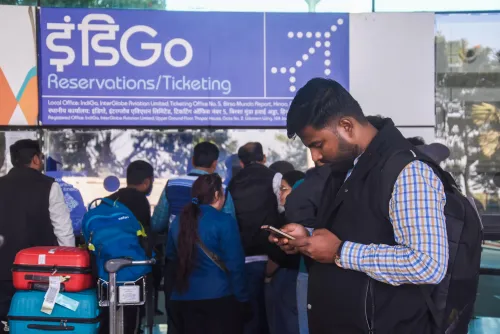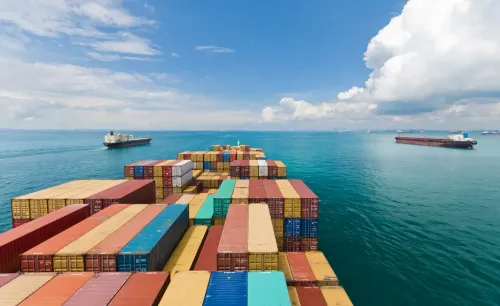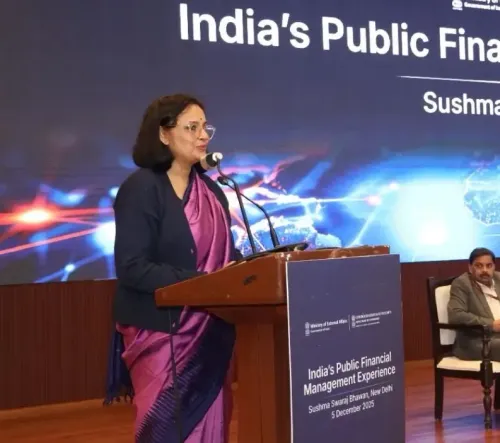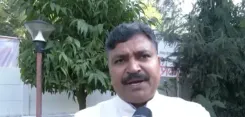Are Informal Chinese Sanctions Undermining India’s Electronics Manufacturing Ecosystem?

Synopsis
Key Takeaways
- China's informal trade restrictions pose a threat to India's electronics manufacturing.
- The smartphone sector has seen remarkable growth, becoming India's largest export.
- Operational inefficiencies and cost increases are resulting from these restrictions.
- ICEA calls for urgent government intervention to address these issues.
- Exploring alternative supply chains is crucial for future resilience.
New Delhi, July 18 (NationPress) - Informal trade constraints enforced by China on capital equipment, essential minerals, and skilled technical personnel could negatively affect India’s electronics manufacturing landscape and hinder the country’s deeper involvement in global value chains (GVCs), as stated by the industry organization India Cellular and Electronics Association (ICEA).
In a correspondence addressed to Minister of Electronics and IT, Ashwini Vaishnaw, the ICEA asserted that within a sector characterized by competitiveness and stringent schedules, three particular bottlenecks orchestrated by the Chinese government in a systematic manner are “designed to weaken India's capabilities to compete on a global level and produce at scale.”
The growth of India’s electronics and mobile manufacturing industry over the last decade has been significant, propelled by proactive policy measures and private sector investments, as well as the migration of GVCs to India.
Leading this expansion is smartphone manufacturing, which achieved a production value of $64 billion in FY25, with exports contributing 38 percent, amounting to $24.1 billion.
Consequently, smartphone exports have elevated electronics from being the seventh-largest export in FY20 to the third-largest in FY25, reaching $38.6 billion, trailing only behind engineering goods and petroleum.
“Smartphones, which ranked 167th among India’s exports in FY15, have now emerged as the country's single largest export. This achievement stems directly from the Production Linked Incentive (PLI) scheme initiated in 2020, aligning with the Government’s vision to escalate electronics production to $500 billion,” the letter noted.
China continues to be the primary global supplier of high-precision tools and specialized machinery, a result of three decades of industrial clustering and profound GVC integration.
“For the electronics sector, including smartphones, this has led to a significant dependence on China for capital equipment,” the ICEA expressed in its letter.
For over a year, China has been limiting equipment exports to India across various sectors, including heavy-duty boring machinery and solar equipment, with recent restrictions extending to electronics manufacturing, the industry body claimed.
“These disruptions are causing operational inefficiencies, affecting scale, and significantly increasing production costs, as local production or collaboration with Japan or Korea incurs costs 3-4 times higher than Chinese imports,” the ICEA emphasized.
The recent limitations imposed by China on rare earth materials are also threatening input availability for smartphone manufacturers in India.
Alternative sources are limited and, where they exist, are economically unfeasible, challenging to scale, or logistically inefficient, according to the ICEA.
Additionally, travel restrictions and the recall of Chinese technical teams working in India have been noted.
“In the last three months, China has undertaken two specific actions that pose significant risks to India’s supply chains in this domain - instructing select companies producing capital equipment to cease operations in India and dismiss trained Indian professionals, thereby severing the technology transfer link previously established with China.
“Recently, they have also mandated Chinese-origin professionals employed in Chinese, Taiwanese, and Indian firms to return to China immediately, mid-assignment. The numbers are substantial,” stated the ICEA in its correspondence.
The industry body is requesting an urgent meeting with the government to deliberate on necessary measures to counter the effects of informal Chinese restrictions on capital equipment, essential minerals, and skilled technical personnel.










